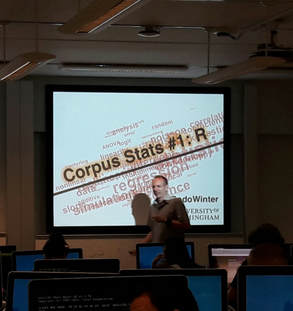0 Comments
On Tuesday 11th July, I was very excited to travel to York to present my Bachelor's Language and New Media project at my first professional conference - SymPol10.
always a strength because it ensures you are familiar with the material and makes you less nervous (that's my theory, anyway). Although the initial registration gathering was, at the time, a rather daunting prospect, I have to emphatically admit that the whole excursion was worth every ounce of anxiety and apprehension.
How do likes and reactions operate as interpersonal politeness strategies when evaluating Facebook status updates posted in 2016?
Facebook status updates, identifying when they operate as politeness strategies. Three stages of data have been collected: a self-report survey, a sub-sample of status updates, and a contextual questionnaire for status update authors. Likes and reactions were found to operate as interactional, interpersonal, and facework strategies on Facebook. Likes and reactions are employed more for positive (than negative) evaluation, as a means to signal endorsement, and as a supportive minimal response that emulates offline positive feedback cues. Likes are particularly used as a form of facework; to signal to the status author that their status has been 'heard', read, and acknowledged (West, 2015: 54). Meanwhile, reactions such as love and haha can be used to maintain or display offline relationships. The small selection of status updates analysed in this study provides an indication as to how likes and reactions are used as positive, supportive, politeness strategies when evaluating Facebook status updates in 2016.
Citation:
Ford, S. (2017). Multimodal metaphor and metonymy and the figurative complexity of mobile phone advertising: A comparison between mobile phone manufacturer and network provider advertisements. (Bachelor's dissertation, University of Birmingham, UK, 5th July 2017). Retrieved from: www.samantha-ford.com/publications |
Categories
All
Archives
October 2022
|
||||||||||||||
Photos from wuestenigel (CC BY 2.0), wuestenigel





